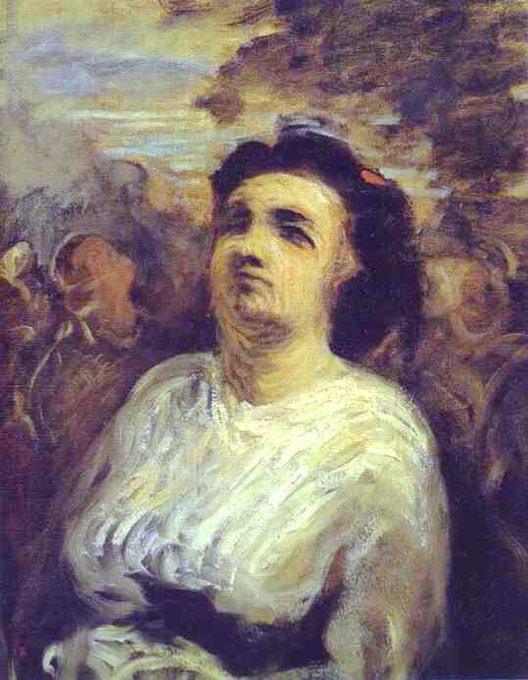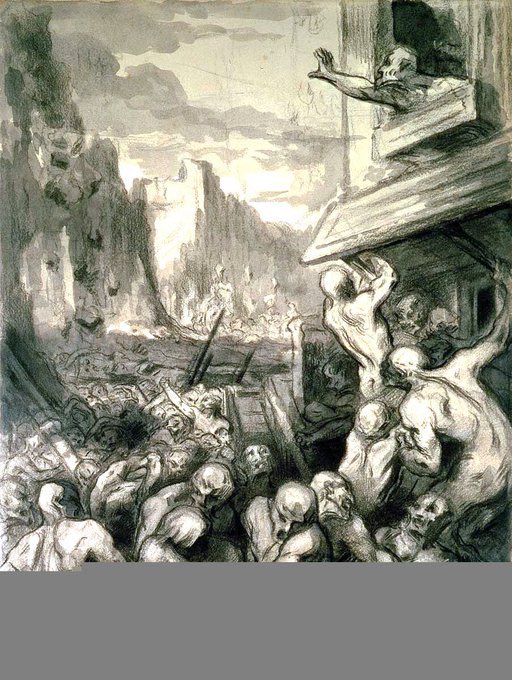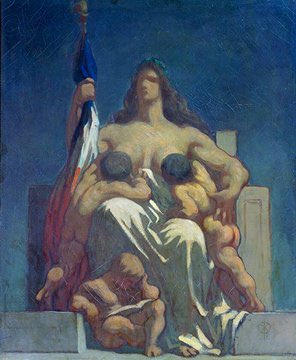In Paris he sought out the hidden people who made the city work - the legions of trade-assistants, bell boys, junior cooks & choristers. He identified with them. Butcher Boy (c1919-20), Butcher’s Meat Rack (c1919), Child with Toy (c1919) & Little Girl with a Doll (c1919)
His landscapes writhe with emotion & energy. To absorb yourself into one Is to feel the experience of how that landscape is encountered. House in the Woods (c1918), Houses by the Sea (c1918), La Route Peu Rassurante (c1918-8) & Landscape with a Donkey (c1918)
He looked at the world in terms of shapes & ideas. How is a metal fork different to a dead fish? Does the Cellist come 2nd to his Cello? What makes a man? Still Life with Herrings (c1916), Cellist (c1916) & Young Man with a Small Hat (c1916)
Daumier went almost blind in 1873 which put paid to his art. A Box at the Theatre (c1865), Don Quixote Reading (c1865), Orchestra Stalls (c1865) & Lunch in the Country (1868). His work is immensely enjoyable.
In his late works his subjects achieve a monumental form & remain memorable in the mind. The Laundress (c1860), A Famous Motive (c1862), Third Class Carriage (c1863) & the Omnibus (1864)
If one theme united his artwork it is the idea of the struggle. Daumier’s leitmotif was always the fight for justice. The Watering Place (c1855), Two Lawyers (c1855), Orchestra Seat (c1856) & The Haulier of a Boat (c1856)
His battle shows the Roman helmeted neoclassical artist fighting with the waistcoated Romantic/Naturalistic Artist. The Wrestlers (c1852), Battle of the (Art) Schools (1855), Don Quixote (c1855) & In Church (1855-7)
The pathos of Christ condemned stands in dramatic contrast with his image of a tyrant king leading by fear. Women running from Satyrs (1850), Ecce Homo (c1851), The King Continues to Reign with Order (1851) & Bathers (c1852)
His strength was being able to move from the specific of a laundress’ struggle to the general understanding of the rebellious French people. Bust of a Woman (c1850-5), Don Quixote (c1850), The Burden (1850-3) & the Destruction of Sodom (c1850)
Daumier, despite his establishment detractors, was a true patriot as shown in his monumental & stirring image of the Republic. The Fifth Act at the Gaiety Theatre (1848), The Republic (1848), The Uprising (nd) & Martyrdom of St Sebastian (1849-52)








































